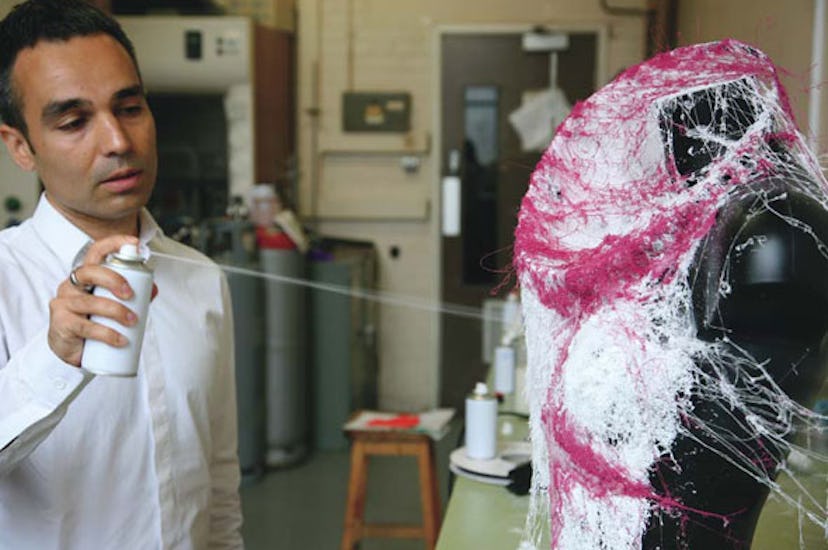“I’m going to make you a T-shirt now,” says Manel Torres. “It will feel a little cold at first,” the scientist adds with a giggle, “but it’s not a totally unpleasant sensation.” I’m standing in Torres’s lab at Imperial College London, stripped to the waist and surrounded by scientists wearing white coats and goggles. I’m here to be a guinea pig for an aerosolized liquid that is sprayed directly onto the body to create wearable garments: the world’s first fabric in a can.
More than 10 years in the making, Torres’s Fabrican may sound like the kind of jokey novelty advertised in the back of a Fifties comic book, but the science behind it is impressively solid. Working alongside particle technologist Paul Luckham, the Spanish-born Torres came up with a formulation of suspended fibers, binders, and polymers that results in a strong nonwoven material. He’s right: It is cold at first—rather like being attacked by frozen cotton candy. Incredibly, the layers of fiber dry and mesh almost instantly, forming a curious rubberlike suede. It’s not quite a T-shirt as I know it, but it’s not far off.
The invention has already attracted interest from car manufacturers, furnituremakers, and—not surprisingly—the U.S. Army. But Torres, who trained as a fashion designer at London’s Royal College of Art, believes that the implications for the clothing industry are immense, likening his invention to Lycra. Eventually he’d like to see his fabric in a can sold commercially—he suggests it could retail for as little as $15. I mention to him that a few months ago, during New York Fashion Week, Marc Jacobs was overheard backstage declaring that “until someone figures out a way to spray clothes on you, fashion can’t really change that much.” Torres’s eyes instantly light up. “Please ask him to get in touch!”
Torres: Miguel Sobreira/Fabrican
